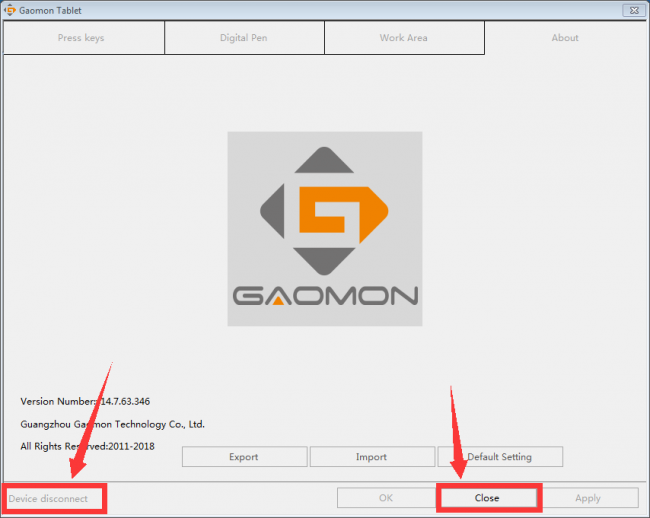

- #Does gaomon pd1560 work well with artrage 5 pro
- #Does gaomon pd1560 work well with artrage 5 windows
The most significant change here is the power brick is no longer needed. Manual, warranty card, cleaning cloth and glove.Wall charger and various international plugs.Third, the pressure sensitivity has increased to 8,192 levels What's in the box Second, the pen no longer uses battery, and does not require charging. There are some improvements made over the Artist 16.įirst, the screen is now matte instead of glossy. Graphic ports supported: HDMI, miniDisplay.Screen: 15.6 inches with 1920 x 1080 resolution.The unit I'm working on is a review unit from XP-Pen so thanks again!
#Does gaomon pd1560 work well with artrage 5 windows
My review will cover my experience of using the pen display on both Windows and Mac.

The latest addition to XP-PEN's product line are the Artist 13.3 and Artist 15.6. It's good to see companies that keep making new products and improve. They are all quite good and value for the money. Over the years, I've featured several XP-PEN products such as the Star 06 wireless tablet, the 10s, 16 and the 22HD.Over the years, I've featured several XP-PEN products such as the Star 06 wireless tablet, the 10s, 16 and the 22HD. Graphic ports supported: HDMI, miniDisplay.Screen: 15.6 inches with 1920 x 1080 resolution.The unit I'm working on is a review unit from XP-Pen so thanks again! My review will cover my experience of using the pen display on both Windows and Mac. Manual, warranty card, cleaning cloth and glove.Wall charger and various international plugs.Third, the pressure sensitivity has increased to 8,192 levels What's in the box Second, the pen no longer uses battery, and does not require charging. The new Artist 15.6 uses less power and can be powered from a powered USB port. This is the HDMI head that goes to your computer. If your computer does not use a HDMI or miniDisplay port, then you will need to get an appropriate adapter.
#Does gaomon pd1560 work well with artrage 5 pro
I'm glad they included the HDMI-miniDisplay adaptor because my Surface Pro uses the miniDisplay port. These are the three heads from the HDMI cable. The red USB goes to the USB power outlet (you can use any existing ones you have, e.g. phone charger), the black USB goes to the computer so that the pen display can recognise the pen, and the USB type-C goes to the pen display. Here are the wall charger and different plugs. You just have to slip on the appropriate plug to use. This is how the pen display looks like straight out of the box. That white label is actually attached to the protective cover of the screen protector. You're supposed to remove the protective cover by pulling the white label, thereby revealing the matte screen protector beneath. I prefer matte screens over glossy reflective screens anytime. They are just less distracting to look at because of the lack of reflections. Matte screen protectors do affect the sharpness of the actual screen though, but to me it's a worthwhile trade-off. The matte surface also provides a really nice texture to draw on. When I move my palm across the screen, there's a somewhat a sandy sound. It has a very paper-like feel when drawing with the pen. This pen display uses an IPS panel so colour reproduction is quite good, and viewing angles are great.

You probably won't need to do any colour calibration out of the box. Since I use many displays, I need to calibrate each new one I use to make sure I get consistent colours, e.g. colours should appear exactly the way they should, e.g. white is white and not with any blue or yellow tint. With the calibrator, I measured the brightness at 166cd/m2. This is not a particularly bright display but this is very usable brightness. The colour gamut is 78% sRGB, 57% NTSC and 60% Adobe RGB. When I compare it to the Artisul D16 which I reviewed recently, I can tell straightaway that the Artisul has better colour reproduction.įor an IPS panel, the colour gamut displayed here is acceptable although it can certainly do better. These are the six physical shortcut buttons on the side. The buttons are firm and have audible clicks. These are the only buttons and ports on the side. There's the power button (which is lit when powered), the brightness control (up and down) and the USB-C port for connecting to the HDMI/Power/Usb cable. The overall design of the Artist 15.6 is more minimal than the Artist 16.


 0 kommentar(er)
0 kommentar(er)
